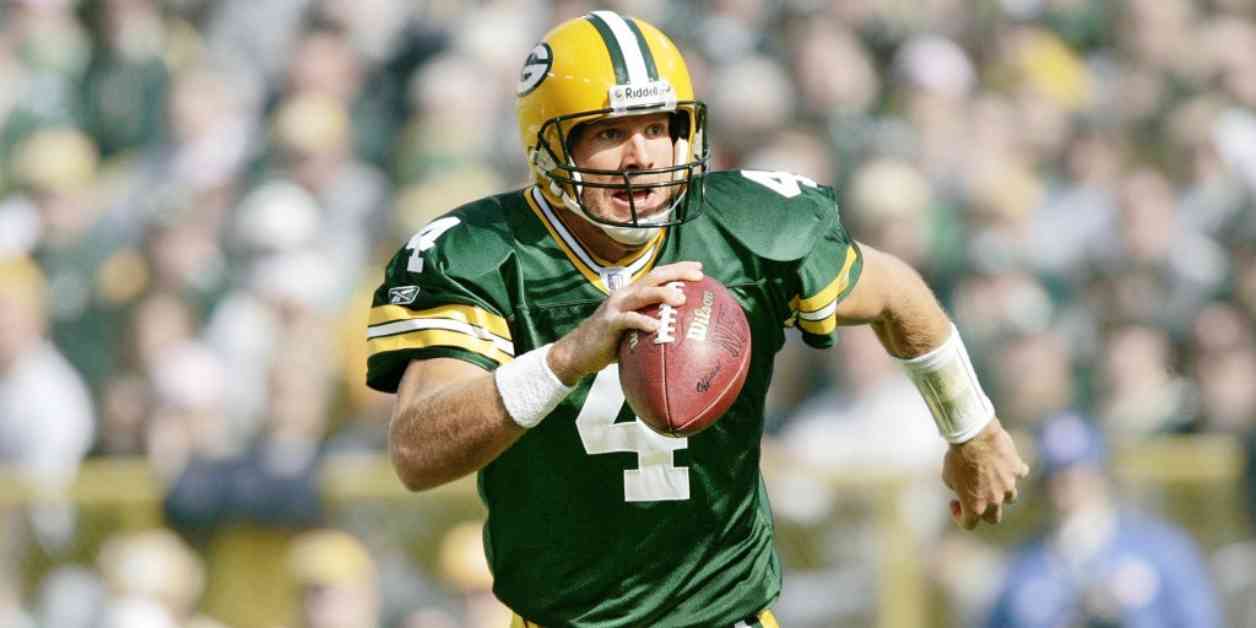Brett Favre, the Hall of Fame quarterback known for his legendary career in the NFL, made headlines recently not for his on-field accomplishments but for his announcement that he has been diagnosed with Parkinson’s disease. This revelation has once again brought attention to the potential links between collision sports, particularly football, and the risk of developing neurodegenerative diseases such as Parkinson’s.
Favre disclosed his diagnosis while testifying before Congress about an alleged misuse of taxpayer money. During the hearing, he mentioned losing an investment in a company that he believed was developing a “breakthrough concussion drug.” This led him to reveal his recent diagnosis of Parkinson’s disease, shedding light on the potential long-term consequences of playing high-impact sports like football.
Throughout his 20-year career in the NFL, Favre played mostly for the Green Bay Packers before retiring 13 years ago. In a candid interview on “The Bubba Army” radio show, Favre admitted to experiencing thousands of concussions during his time on the field. He described how every time his head hit the turf, he would experience ringing, stars, and flash bulbs, yet he continued to play through the injuries. This firsthand account underscores the dangers of repeated head trauma in contact sports like football.
The Risks of Collision Sports
Sports that involve repetitive collisions, such as football, boxing, and rugby, pose a significant risk of concussions and other head injuries. These impacts can lead to various neurodegenerative diseases, including Parkinson’s, Alzheimer’s, amyotrophic lateral sclerosis (ALS), and chronic traumatic encephalopathy (CTE). Research has shown that even a single concussion can increase the risk of developing Parkinson’s by more than 55%.
A study conducted last year revealed that individuals with a history of playing football had a 61% higher likelihood of exhibiting Parkinson’s symptoms or receiving a diagnosis of the disease. Similarly, a 2018 study found that repetitive head impacts from years of participating in contact sports were associated with precursors to Parkinson’s. These findings highlight the concerning correlation between football and neurodegenerative diseases, raising questions about the long-term health implications for athletes in high-impact sports.
The Challenges of Diagnosing Parkinson’s
Diagnosing Parkinson’s can be complex, especially when trying to determine the role of factors like football-related head trauma. Dr. Hannah Bruce, who conducted research at the Boston University Alzheimer’s Disease Research Center, emphasized the difficulty in pinpointing the exact influence of football on cases like Favre’s. While it may not be definitive that football directly causes Parkinson’s, the increased risk associated with the sport suggests a potential connection.
Neurologists have also faced challenges in linking Parkinson’s to head trauma, as seen in the case of boxing legend Muhammad Ali. Although his medical history supported a diagnosis of young-onset Parkinson’s, experts were unable to definitively tie the disease to his boxing-related head injuries. This ambiguity underscores the complexities of identifying the precise triggers for neurodegenerative diseases like Parkinson’s.
The Impact of Repeated Brain Trauma
Repeated trauma to the brain can trigger the onset of Parkinson’s, as it can lead to inflammation and the gradual death of nerve cells over time. While football injuries are recognized as a potential risk factor, they are not the sole cause of the disease. Other factors, such as genetic predisposition, age, and exposure to certain environmental elements, also play a role in the development of Parkinson’s.
Dr. Kevin Crutchfield, a neurologist at Hackensack Meridian Health, emphasized the importance of ruling out alternative factors before attributing Parkinson’s to football injuries. He noted that while tens of thousands of men have played in the NFL, there has not been a significant surge in Parkinson’s diagnoses among them. The complexity of diagnosing Parkinson’s underscores the need for comprehensive assessments that consider various contributing factors.
The Role of CTE in Parkinson’s
Chronic traumatic encephalopathy (CTE), a degenerative brain condition associated with repeated head trauma, has also been linked to Parkinson’s in some cases. Dr. Thor Stein, director of molecular research at Boston University’s CTE Center, highlighted the connection between CTE and the development of Parkinson’s symptoms. Studies have shown that individuals with CTE may exhibit signs of parkinsonism, further underscoring the intricate relationship between head trauma and neurodegenerative diseases.
In a study of brain donors with diagnosed CTE, nearly a quarter displayed symptoms of parkinsonism, indicating the potential overlap between the two conditions. Stein’s research suggests that prolonged exposure to repetitive head injuries increases the risk of developing various degenerative diseases, including Parkinson’s. The intricate interplay between CTE and Parkinson’s underscores the need for further exploration into the long-term consequences of head trauma in contact sports.
The Importance of Brain Health in Sports
As awareness of the risks associated with collision sports continues to grow, there is a heightened emphasis on prioritizing brain health among athletes. Dr. Crutchfield emphasized the importance of allowing the brain to heal after a concussion to prevent more severe injuries. Athletes who conceal concussions in an effort to continue playing put themselves at greater risk of long-term brain damage, underscoring the need for proactive measures to safeguard athletes’ well-being.
In light of Favre’s diagnosis and the ongoing research into the links between football and neurodegenerative diseases, the sports community must prioritize player safety and brain health. By raising awareness of the potential risks associated with high-impact sports, athletes, coaches, and medical professionals can work together to mitigate the long-term consequences of head injuries. As the conversation around collision sports and brain disease continues to evolve, it is crucial to prioritize the well-being of athletes and implement measures to protect their long-term health.

















